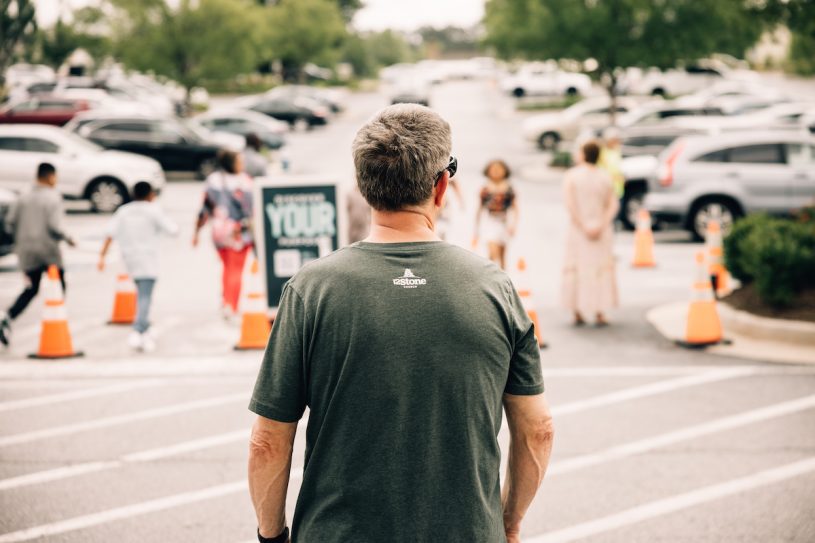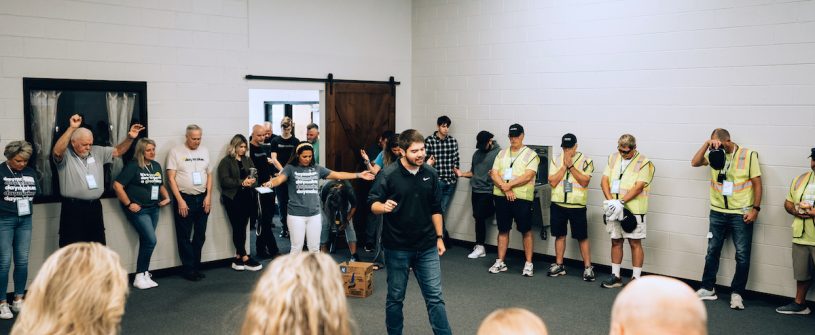The two off-the-cuff questions I’ve heard most over the last two weeks are:
- What now?!
- What’s next?
The first question, “What now?!” comes with a feeling of being overwhelmed with change fatigue, unsettledness, and maybe even a little punch drunk. As if to say, “Really, one more COVID-19 thing, one more change, really?”
The second question, “What’s next?” comes with a sense of anticipation, innovation, and eagerness to embrace the best opportunities amidst the mess of COVID.
Let me be quick to say; I’m not pitting one against the other, there is zero evaluation intended here.
In fact, most leaders are asking both questions! I have.
This is a critical time during the COVID pandemic because church leaders are discussing a gigantic question: “When do we re-open the doors of our church, and what does that look like?
OK, let’s be honest, no one has a perfect answer to when and how to open church up again, because no one has done it yet. (Or very few.) Nonetheless, we have to figure that out and figure it out now.

I’ve read a couple of good posts with more detailed lists of questions we should be asking from “Do we pass the offering plate anymore?” to “What about serving coffee?” These lists are great and very much needed.
In this post, I’d like to offer something different. I’d like to give you 4 big questions that are more macro in nature.
4 big questions that will help you open your church successfully:
1) Where do you draw your line between safety and experience?
The first implied part of this question is, “When is it safe?”
The truth is, no one knows for sure, but that doesn’t absolve any leader from the responsibility to make their best decision in the best interest of the people.
Yes, your people will come back when they are ready, it’s their choice, but we must still be thoughtful and careful in our planning because when we open the doors, we are making an invitation.
One possible solution toward opening sooner than later, and remain safe, is to greatly limit the seating capacity in your worship space. Also, significantly limit additional programming as well as hospitality with food and drink.
However, that will dramatically change your experience.
Take worship, for example, a smaller worship team; the room is only 30% full, people wearing masks, etc. That isn’t bad, and many churches will do just that, but is that best for your church?
Therefore, leaders are asking, “Is coming back to worship services less than 100% what we want our congregation to experience, or should we wait longer to come back stronger?
The second implied part of the question is, “When can it be really good?”
That part of the question includes your volunteers.
None us should delay in preparing for our volunteers to come back, both in terms of safety and their readiness to lead so we don’t have preparation twice.
2) How do you welcome your congregation back?
What vision will you cast for the return of your congregation?
If you don’t set the right expectations for your congregation in their return to church, you will surely miss the mark and leave many people frustrated.
Not because you did anything wrong, but because you didn’t communicate what they should expect.
Why is this important?
Because even in the best of scenarios, their church experience won’t be the same, at least not exactly the same as when they left it. You don’t want to surprise them!
Paint a positive picture of what they should expect and welcome them “home” to that experience.
Don’t over-promise what you will do, meaning whatever you establish as your new church experience is going to change.
Communicate, communicate, communicate!
Again, don’t surprise anyone; keep them in the loop of what you are planning.
Further, not everyone will respond the same to the invite and welcome back.
Some people will come back tentative, and others will run in through the doors.
How do you greet them? Masks and gloves? Can you make that fun and creative?
Last and most important, think through your theology.
How can you best talk about Jesus in the most relevant way? The central message of the gospel is the same, but everything else has changed.
Including your people, we are all different in some ways. The impact of COVID-19 has been upon our emotions, attitude, perspective, and effects our behaviors. Perhaps some of this will fade, but for now, it’s very real.
Since teaching in the context of current culture is critical, how might that impact your teaching?
3) How do you measure success without any benchmarks?
We are all aware of the differing opinions and multiple options about how to count and measure online attendance. It’s approaching algorithmic proportions!
It’s difficult to imagine all the possible options if churches attempt to measure (count) a combination of online and live in the room.
This article is focused on helping by providing questions for leadership conversations, not answers, but I’m going to infringe on that a little here. Not “answers,” really, but my thoughts about a good direction.
Attendance will always matter, but engagement will be the new rule of measure.
OK, so engagement is not new, but the importance of engagement will become significantly greater, and we have the opportunity to lean in more than ever before.
First, I think there is a difference between participation and engagement. Participation is showing up; engagement is signing up. Engagement is more than in the moment; it extends beyond the experience. There is a big difference.
Participation may look like showing up to a worship service, singing, raising a hand, texting something at the communicator’s request or invitation. And that is great!
Engagement is about committing to something. It may or may not be long term, but it requires willful attention.
There are many examples of engagement, such as:
- Small groups
- Prayer
- Inviting a friend to church
- Serving
- Giving financially
- Leadership
- Sharing your faith
- Fruit of the Spirit
You get the idea.
Which ones will you emphasize, and how will you “count” or measure progress?
4) What percentage of your ministry will be online, and what percentage live “in the room”?
I recently had a couple of conversations with a pastor in a church of about 1,200 people, and they did not have any online worship service prior to COVID.
In a period of two weeks, they were fully up and running. I applaud them for that! That was a fast learning curve for their team and fast for the congregation.
They are very aware that they can never go back to where they were. Even when they open the doors, online for them is here to stay.
The question is how much of your ministries should remain online and what goes back to “live in the room.”
The worship service is perhaps the easiest to answer; it’s both. The part that is not so “easy” is how do you lead it out? Which experience do you make a priority? Which one do you encourage?
It’s important that you have conversations on your team to think through how you want to communicate it.
I encourage you to keep in mind as you make your post COVID plans and implement them in the life and ministry of your church, that your plans will change as you practice and learn. Stay adaptable and innovate!



